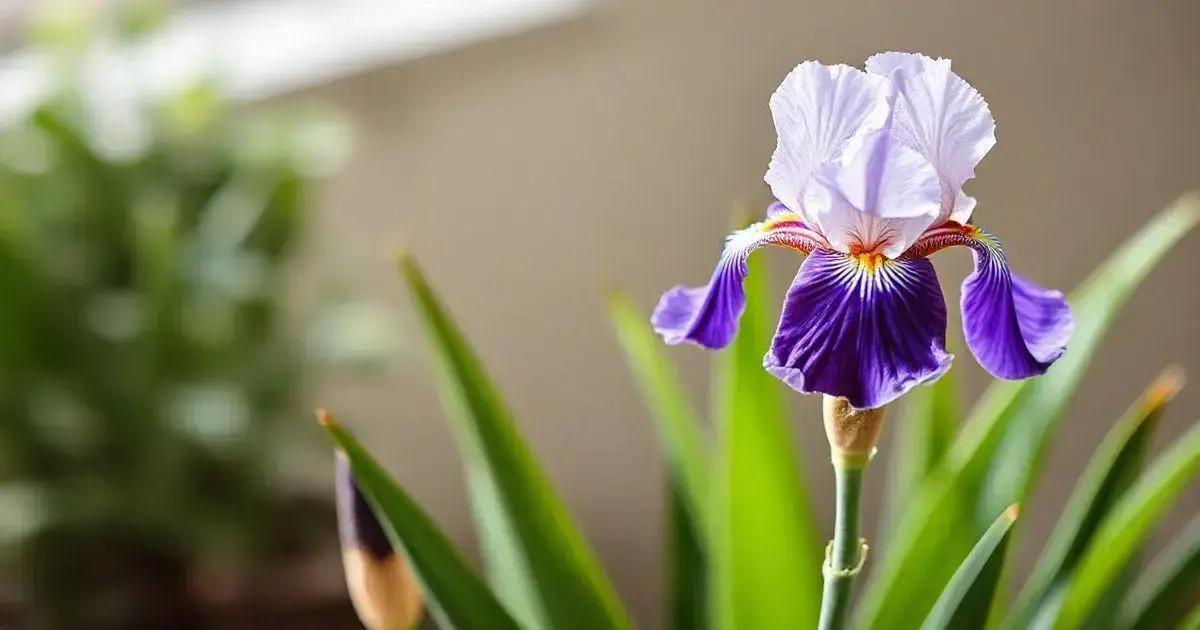How to Care for Iris Plants After They Bloom: 5 Essential Tips
How to care for iris plants after they bloom can be a mystery to many gardening enthusiasts. With the right post-bloom care, your iris plants can thrive and produce stunning flowers year after year. As we dive into the essentials, you’ll discover practical tips that ensure your garden remains vibrant and healthy, making your efforts worthwhile.
Table of Contents
TogglePost-bloom care essentials for iris plants
How to care for iris plants after they bloom involves several essential practices to keep them healthy and vibrant. Following these steps will not only promote regrowth but also prepare your iris plants for the next blooming season.
Watering practices
After blooming, it’s crucial to adjust your watering routine for iris plants. Proper hydration helps support their recovery:
- Water deeply once a week, ensuring the soil is moist without being waterlogged.
- Monitor rainfall and adjust your watering schedule accordingly.
- Reduce watering frequency as the leaves begin to yellow.
Soil requirements
Maintaining the right soil conditions is vital for healthy iris plants. Consider the following:
- Use well-draining soil to prevent root rot.
- Incorporate organic matter or compost to enrich the soil.
- Test the soil pH; ideally, it should be between 6.0 and 7.0.
Pruning dead foliage
Proper pruning post-bloom is essential in managing iris plants:
- Cut back dead or withered leaves to about 6 inches above the ground.
- Avoid cutting green leaves until they yellow, as they help nourish the plant.
- Make clean cuts with sterile tools to prevent disease.
Fertilizing guidelines
Feeding your iris plants after flowering can support their recovery and promote future blooms:
- Apply a balanced, slow-release fertilizer according to package instructions.
- Avoid high-nitrogen fertilizers, which can produce excessive foliage at the expense of blooms.
- Explore indoor gardening techniques for supplemental feeding options.
Pest and disease management
Identifying and managing common pests is key to maintaining healthy iris plants:
- Monitor for aphids, spider mites, and iris borer.
- Consider organic insecticides or hand-picking pests when necessary.
- Inspect regularly for signs of fungal infections and apply appropriate fungicides if needed.
Conclusion
By following these post-bloom care essentials for iris plants, you can ensure they remain strong and prepare for future seasons. Effective watering, soil care, pruning, fertilizing, and pest management practices will contribute significantly to the health of your iris.
Effective pruning techniques for iris maintenance

Effective pruning techniques for iris maintenance are vital for promoting the health and beauty of your iris plants. Proper pruning enhances airflow, reduces disease risk, and encourages vibrant blooms in the next season.
Timing your pruning
Understanding when to prune your iris plants is crucial to their overall care:
- Prune immediately after blooming, usually in late spring to early summer.
- Wait until the foliage begins to yellow, indicating the plant is entering dormancy.
- Avoid heavy pruning in the fall, as this can expose iris plants to winter damage.
Tools for effective pruning
Using the right tools ensures clean cuts and minimizes plant stress:
- Quality pruning shears or scissors to make precise cuts.
- Gloves to protect your hands while handling plants.
- Disinfect your tools before and after use to prevent disease transmission.
Pruning method steps
To properly prune your iris plants, follow these key steps:
- Start by removing spent flowers by cutting the flower stem down to the base to maintain plant aesthetics.
- Remove yellowing or dead leaves, cutting them to about 6–8 inches above the ground.
- Ensure you’re not cutting any healthy green leaves, as these contribute to the plant’s energy production.
Common pruning mistakes
Avoid these common pitfalls to ensure effective iris maintenance:
- Pruning too late in the season can weaken the plant.
- Over-pruning leaves may stunt future growth.
- Neglecting to disinfect tools can lead to infections.
Benefits of proper pruning
Effective pruning is essential for several reasons:
- Enhances airflow and light penetration, reducing disease susceptibility.
- Promotes healthy new growth for the next blooming cycle.
- Improves overall appearance and vitality of the iris plants.
For more advanced techniques in plant care, consider exploring indoor gardening techniques that can further enhance your gardening skills.
Feeding practices for iris plants after flowering
Feeding practices for iris plants after flowering are crucial for maintaining their health and ensuring a bountiful display of blooms in the future. Understanding how to nourish your irises can lead to vibrant growth and longevity.
Timing your fertilization
Identifying the right time to feed your iris plants after blooming enhances their recovery:
- Begin fertilizing about 4-6 weeks after the flowers have faded.
- Consider soil temperature; apply fertilizer when the soil warms up in spring.
- Avoid fertilizing late in the fall, as this can encourage new growth susceptible to frost.
Choosing the right fertilizer
The type of fertilizer you choose can significantly impact iris plant health:
- Opt for a balanced fertilizer with equal parts nitrogen, phosphorus, and potassium (e.g., 10-10-10).
- Slow-release fertilizers are ideal as they provide a steady supply of nutrients.
- Avoid high-nitrogen fertilizers, which can lead to excessive foliage growth while reducing blooms.
Application techniques
Proper application helps ensure that nutrients are effectively delivered:
- Evenly spread the fertilizer around the base of the plants, keeping it clear from the bulb area.
- Water the plants thoroughly after applying the fertilizer to help the granules dissolve.
- Consider applying in early morning for optimal nutrient absorption.
Signs of nutrient deficiency
Recognizing when your iris plants need more nutrients is vital for their upkeep:
- Pale or yellowing leaves may indicate a nitrogen deficiency.
- Poor flowering or reduced bloom size suggests a need for phosphorus.
- Browning leaf tips can signal a potassium deficiency.
Organic options for feeding
For those looking for natural alternatives, consider these organic feeding options:
- Compost or well-rotted manure can improve soil health and provide nutrients.
- Bone meal is an excellent phosphorus source, beneficial for root development and blooming.
- Fish emulsion provides a balanced nutrient profile while enhancing soil life.
By incorporating effective feeding practices, you can ensure your iris plants thrive after flowering. For those interested in enhancing their gardening knowledge, consider exploring indoor gardening techniques for further insights.
In conclusion
Caring for iris plants after they bloom is essential for ensuring their health and beauty in the years to come. By implementing effective post-bloom care, including appropriate watering, pruning, and feeding practices, you set the stage for vibrant blooms. Remember, understanding the right techniques and timing can make a significant difference in your garden’s aesthetics and plant vitality. For further insights and tips on enhancing your indoor garden, stay curious and keep exploring!

